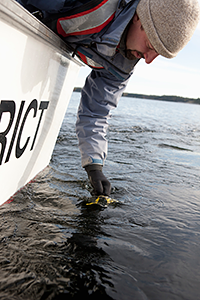The Digital Notebook is a space to hold your thoughts, questions, and growing understanding throughout this Unit. You will be able to access it from every Module. Use The Digital Notebook to jot your thinking, take notes, or as a space to develop your writing. You can print and export it anytime, and at the end of lesson 8 you’ll be reminded to save a copy for yourself.
Globally, 1 in 9 people still have no access to clean water. But in the communities we serve, it’s 9 out of 9. Water is a daily and crippling challenge. Without water you can’t grow food, you can’t build housing, you can’t stay healthy, you can’t stay in school and you can’t keep working. Read More
The Safe Drinking Water Act defines the term “contaminant” as meaning any physical, chemical, biological, or radiological substance or matter in water. Therefore, the law defines “contaminant” very broadly as being anything other than water molecules. Read More

| Cookie | Duration | Description |
|---|---|---|
| cookielawinfo-checkbox-analytics | 11 months | This cookie is set by GDPR Cookie Consent plugin. The cookie is used to store the user consent for the cookies in the category "Analytics". |
| cookielawinfo-checkbox-functional | 11 months | The cookie is set by GDPR cookie consent to record the user consent for the cookies in the category "Functional". |
| cookielawinfo-checkbox-necessary | 11 months | This cookie is set by GDPR Cookie Consent plugin. The cookies is used to store the user consent for the cookies in the category "Necessary". |
| cookielawinfo-checkbox-others | 11 months | This cookie is set by GDPR Cookie Consent plugin. The cookie is used to store the user consent for the cookies in the category "Other. |
| cookielawinfo-checkbox-performance | 11 months | This cookie is set by GDPR Cookie Consent plugin. The cookie is used to store the user consent for the cookies in the category "Performance". |
| viewed_cookie_policy | 11 months | The cookie is set by the GDPR Cookie Consent plugin and is used to store whether or not user has consented to the use of cookies. It does not store any personal data. |